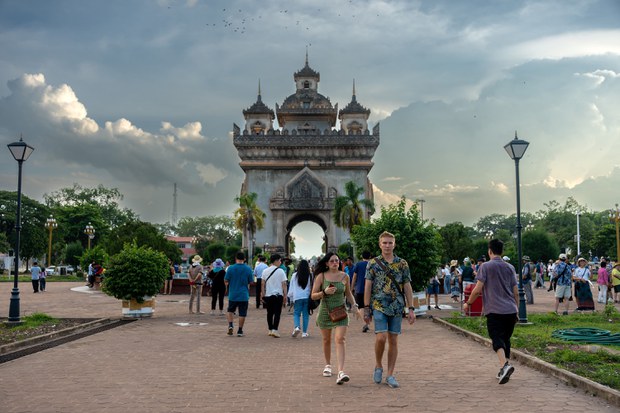IMF Says Exports, Tourism Will Spur Laos’ Economic Growth by 4%
Source: Radio Free Asia
Revenue from tourism, foreign investment, and exports will help Laos’ struggling economy grow by 4% in 2024, the International Monetary Fund said in a forecast.
But that won’t be enough to counter the continuing high inflation rates – more than 25% – that have put many Laotians on the edge of poverty, several Laotians told Radio Free Asia.
“People in rural areas are still looking for food from forested areas,” a Saravane province resident said. “They don’t have the money to buy food in the market. They only buy the necessities.”

If the government can’t get inflation under control, no one will benefit from economic growth, a Xieng Khouang province resident said.
“People are getting poorer by the day,” he said. “They live paycheck to paycheck. Most products and merchandise sold in the markets are imported.”
The Asian Development Bank also predicted this month that the Lao economy would expand by 4% next year. It said last month that the country would grow by 3.7 percent in 2023.
But an ADB official told RFA that the rate of inflation would remain at 28% year over year – the same as it was in 2023.
Price controls, wage increases
Inflation has soared to as much as 40% in recent years following a depreciation in the Lao currency and declines in foreign investment.
Earlier this year, Lao authorities imposed price controls on basic necessities such as pork, rice and natural gas. The government has also raised the minimum wage several times since 2022 to address the cost of living crisis.
Last week, Lao Prime Minister Prime Minister Sonexay Siphandone acknowledged at a conference in Vientiane that the economy has been sluggish due to high debt levels, inflation, high gasoline prices and several other factors.
But economic growth in Laos will strengthen as tourism, exports and service industries recover from the COVID-19 pandemic, and as investment from neighboring Thailand, China and Vietnam resumes, according to the ADB official.
The IMF forecast was released on Oct. 18, but an updated prediction should be available next month, once officials look at more export and tourism data.
“One issue is that the currency is still fluctuating,” an IMF representative told RFA on Friday. “That needs to be fixed quickly if they want the macroeconomy to stabilize.”
The government must also entice more foreign investment, motivate locals to increase their export-oriented production and lower the amount of import if it wants more consistent growth, he said.
Photo Credit: Kaikeo Saiyasane/Xinhua via Getty Images

